Introduction
In an age where cyber threats are becoming increasingly sophisticated, organizations must prioritize their security strategies to safeguard their digital assets. Microsoft Sentinel emerges as a powerful cloud-native security information and event management (SIEM) solution, designed to provide comprehensive visibility and control over security operations.
With the rapid shift towards cloud infrastructure—where an estimated 60% of corporate data resides—businesses are compelled to adopt robust security measures to navigate the complexities of this evolving landscape.
This article explores the multifaceted benefits of Microsoft Sentinel, including:
- Its real-time threat detection capabilities
- Seamless integration with Azure services
- The operational efficiencies it brings to security teams
As organizations face mounting pressure to protect themselves against an array of cyber threats, understanding the advantages of implementing Microsoft Sentinel becomes crucial for fostering a resilient security posture.
Understanding Microsoft Sentinel: A Comprehensive Overview
As a managed Microsoft Sentinel solution, it stands out as a leading cloud-native information and event management (SIEM) system, delivering intelligent analytics and threat intelligence across diverse enterprise environments. As industries are predominantly shaped by technological advancements, consumer preferences, and regulatory changes, businesses increasingly rely on cloud infrastructure, with 60% of corporate data currently stored in the cloud. This evolution has increased the need for strong protection solutions, encouraging numerous entities to discover efficient methods to lower their cloud expenses.
The Azure service utilizes its features, providing a scalable and adaptable structure that centralizes data from various sources. This centralized method allows organizations to attain comprehensive visibility into their protective stance, essential for effective threat detection and response. With advanced characteristics designed for threat analysis, the software empowers enterprises that have managed Microsoft Sentinel to proactively oversee their protective operations and react decisively to events.
In a landscape shaped by rapid technological advancements and evolving consumer preferences, it has become an essential tool for improving protective measures and safeguarding digital assets. Moreover, grasping the elements affecting the Cloud Native SIEM Market offers important perspectives on the need for embracing solutions such as Azure to tackle the intricacies of contemporary challenges in safeguarding.
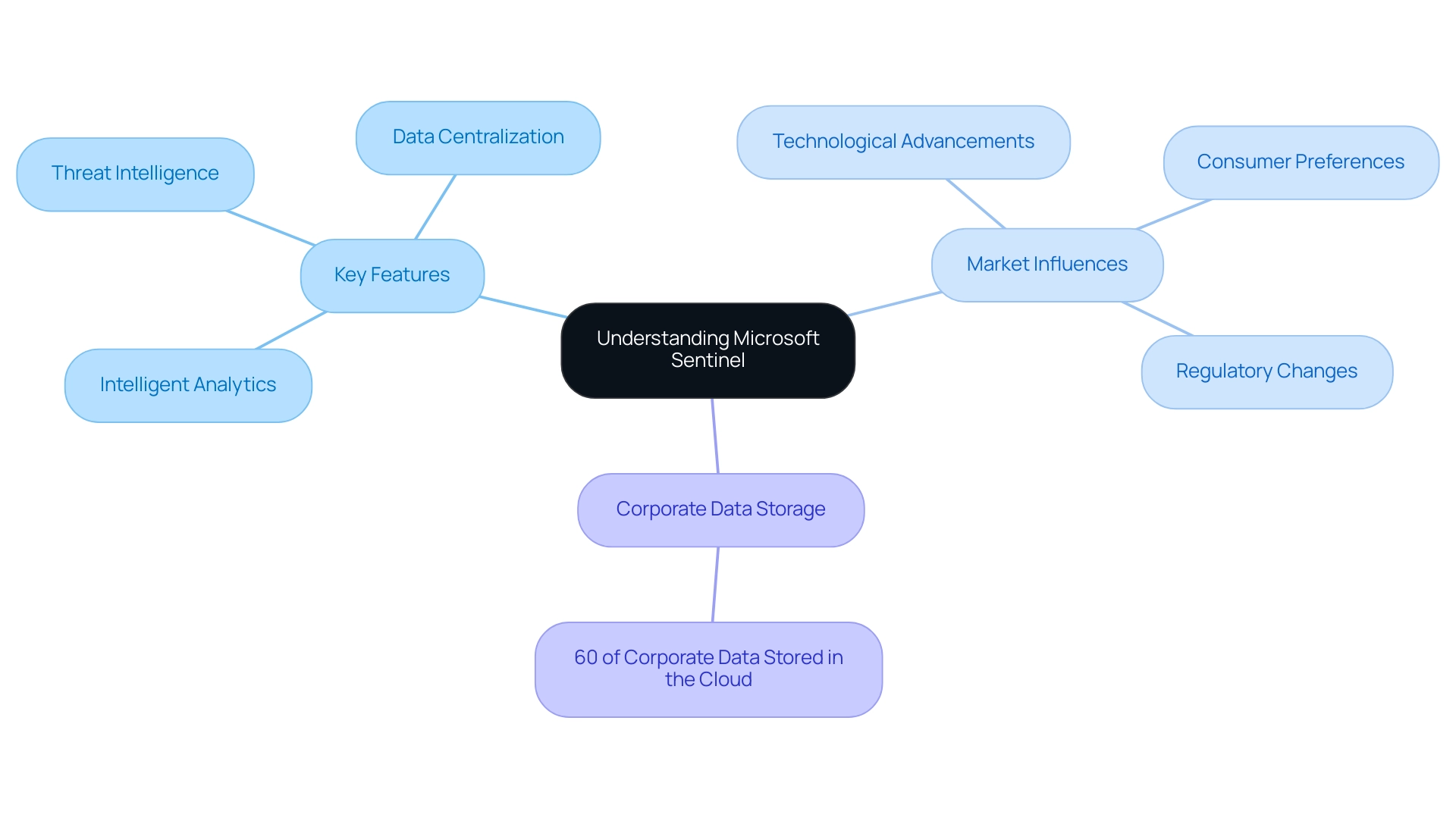
Top Benefits of Implementing Microsoft Sentinel for Enhanced Security
-
Automated Threat Detection: Microsoft Sentinel harnesses the power of machine learning and artificial intelligence to detect anomalies and potential threats in real-time. This advanced capability significantly decreases the time needed to detect incidents, enabling entities to react more swiftly and effectively. Given that 43% of cyberattacks target small businesses, yet only 14% feel adequately prepared, the necessity for robust automated threat detection has never been more critical. As highlighted by Malwarebytes, remote employees have led to a breach in 20 percent of companies during the pandemic, further underscoring the changing threat landscape.
-
Enhanced Incident Response: The platform includes automated playbooks that streamline incident response processes, enabling teams to act decisively against emerging threats. By automating standard replies, companies can concentrate their resources on more intricate challenges, thus improving overall defense posture. This efficiency is especially vital in light of the alarming statistic that only 9% of entities employ all five essential protections against internet-based attacks, underscoring the inadequacy of current defenses.
-
Comprehensive Safety Insights: Microsoft Sentinel aggregates data from diverse sources, providing a holistic view of an organization's safety landscape. This comprehensive insight facilitates informed decision-making, empowering teams to prioritize threats effectively. The education sector alone accounted for 13% of all data security breaches in the first half of 2017, underscoring the importance of having a thorough understanding of potential vulnerabilities.
-
Scalability: As a fully cloud-native solution, managed Microsoft Sentinel is designed to scale with your entity, accommodating increasing data volumes without compromising performance. This scalability is especially advantageous in today’s dynamic threat landscape, where the COVID-19 pandemic resulted in a staggering 238% rise in cyberattacks on banks, with 27% of attacks aimed at banks or healthcare institutions. This emphasizes the urgent need for flexible protective solutions.
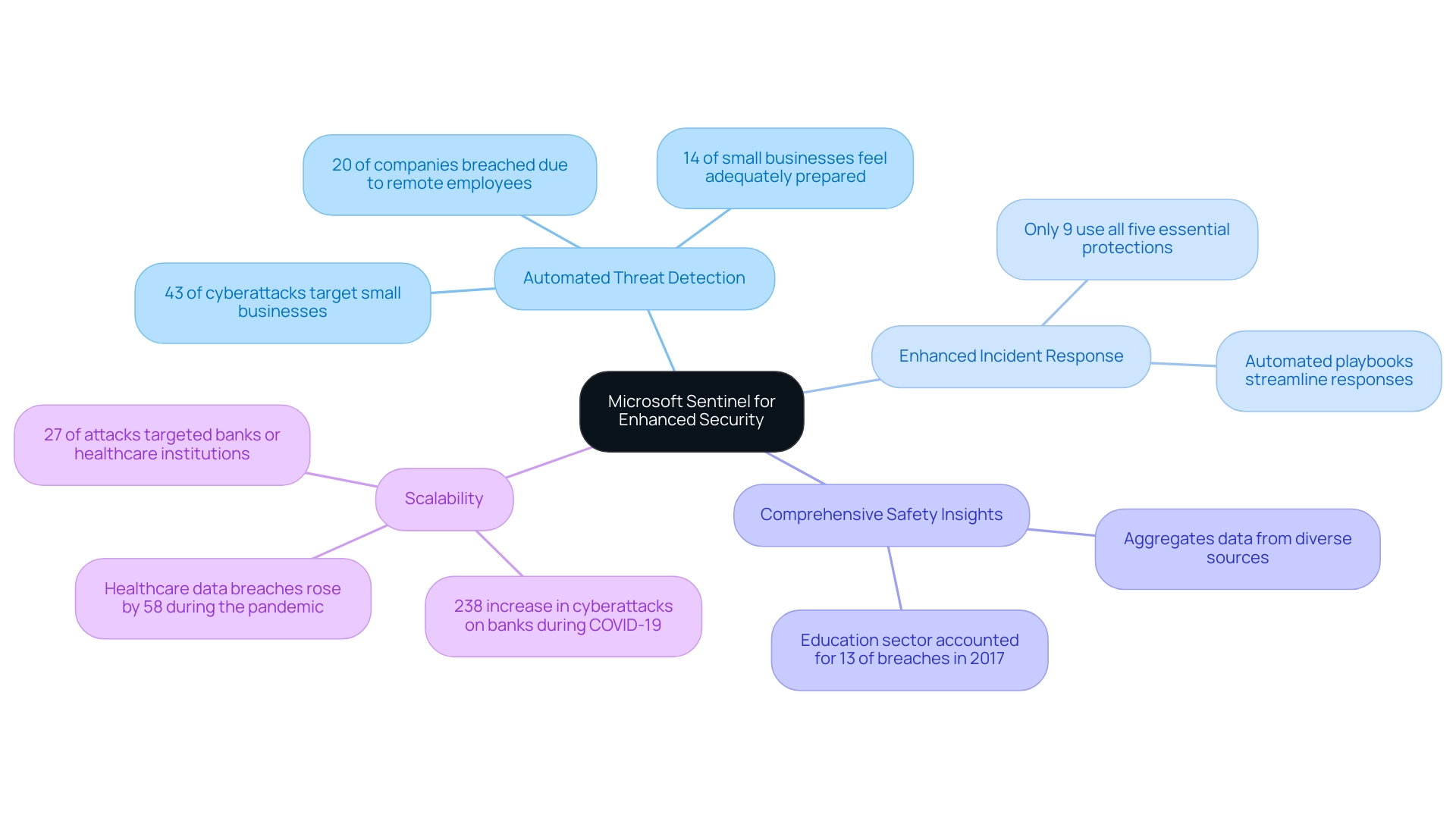
Operational Efficiency: How Microsoft Sentinel Reduces Downtime
By using managed Microsoft Sentinel, organizations can greatly enhance operational efficiency through the automation of routine protective tasks, allowing them to react quickly to potential threats. This automation not only reduces the time teams spend on manual monitoring and incident response but also plays a crucial role in minimizing downtime. With operational downtime costing organizations millions annually, and with SIEM operating expenses potentially reaching $3–4 million annually, effective automation strategies are essential in maintaining business continuity.
The centralized dashboard of managed Microsoft Sentinel empowers teams to monitor their environments in real-time, facilitating rapid decision-making and enabling uninterrupted productivity amidst challenges. Furthermore, a recent analysis indicates that automated protective solutions can reduce downtime by over 40%, illustrating their vital role in operational efficiency. As Megan Garza aptly states, "Cybersecurity in the healthcare sector is crucial.
Robust protective measures are essential not only to safeguard assets but also to ensure seamless operations and maintain business continuity. This emphasizes the necessity for thorough protective strategies that align with the operational efficiency objectives of companies, akin to how the banking sector has realized substantial cost reductions through technological innovations such as blockchain.
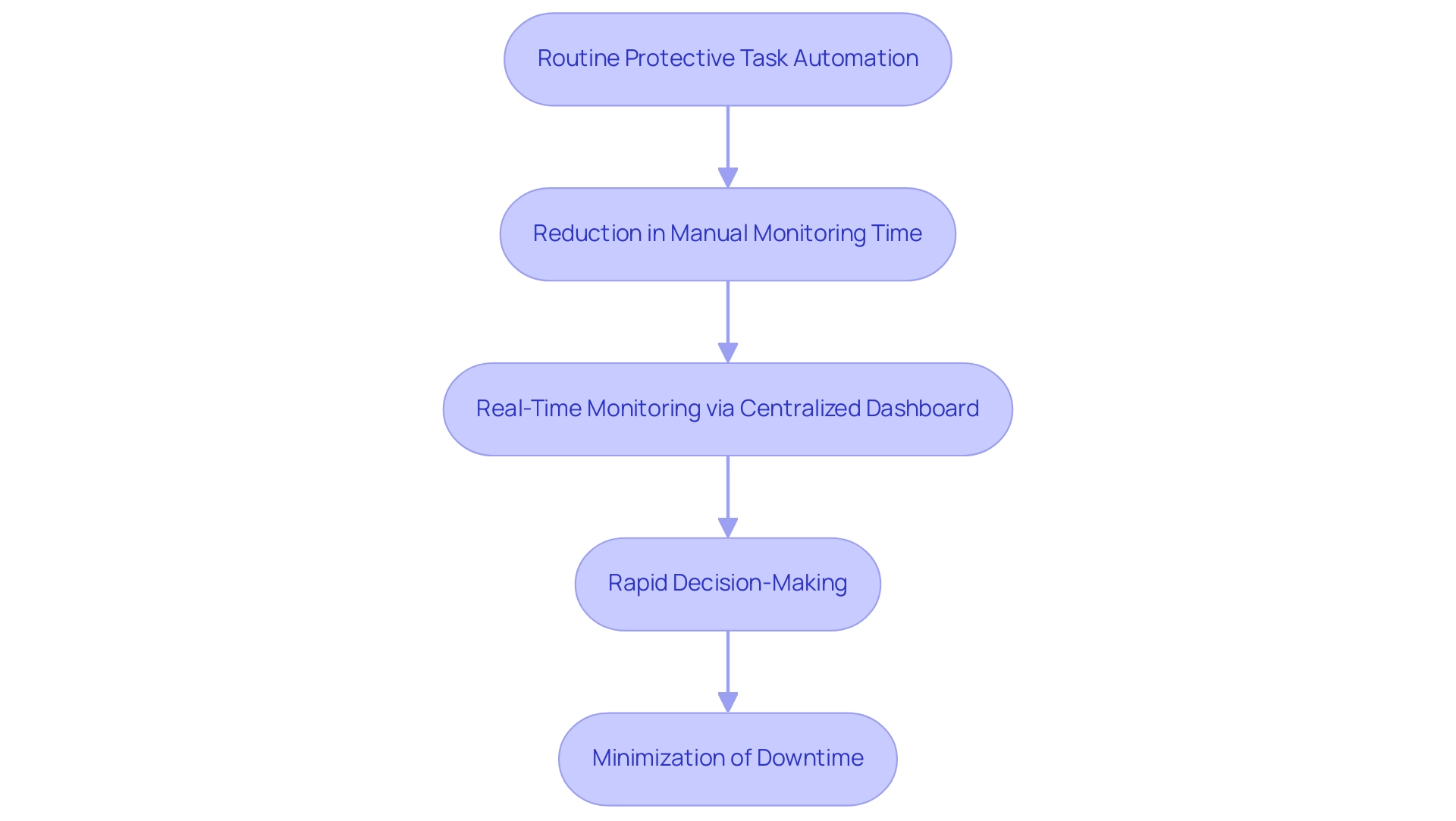
Real-Time Threat Detection and Incident Response with Microsoft Sentinel
Organizations have managed Microsoft Sentinel effectively to excel in its real-time threat detection capabilities, empowering them to proactively combat potential cybersecurity threats. The platform utilizes continuous data examination and advanced analytics to identify suspicious activities as they emerge, allowing teams to investigate incidents with urgency. This proactive stance is essential, particularly considering recent discoveries suggesting that cybercriminals can effectively penetrate 93% of company networks, highlighting the urgent need for strong protective measures.
Notably, with 83% of suppliers operating in the technology sector, the landscape of cybersecurity demands heightened vigilance. Moreover, the incident response automation is designed to ensure that predefined actions are executed promptly, significantly reducing the impact of security incidents on the organization. As a testament to its effectiveness, experts emphasize that automation not only streamlines response processes but also minimizes damage, ultimately safeguarding vital organizational assets.
Moreover, the reduction of 11 percent in computer programmer job positions forecasted by the Bureau of Labor Statistics emphasizes the changing dynamics of the cybersecurity workforce, which requires dependence on sophisticated tools. The incorporation of these abilities places this platform as a crucial partner in the continuous fight against developing cyber threats, which is managed by Microsoft Sentinel. For instance, the case study of watering hole attacks illustrates the diverse methods employed by APT groups, reinforcing the critical need for proactive threat detection and incident response.
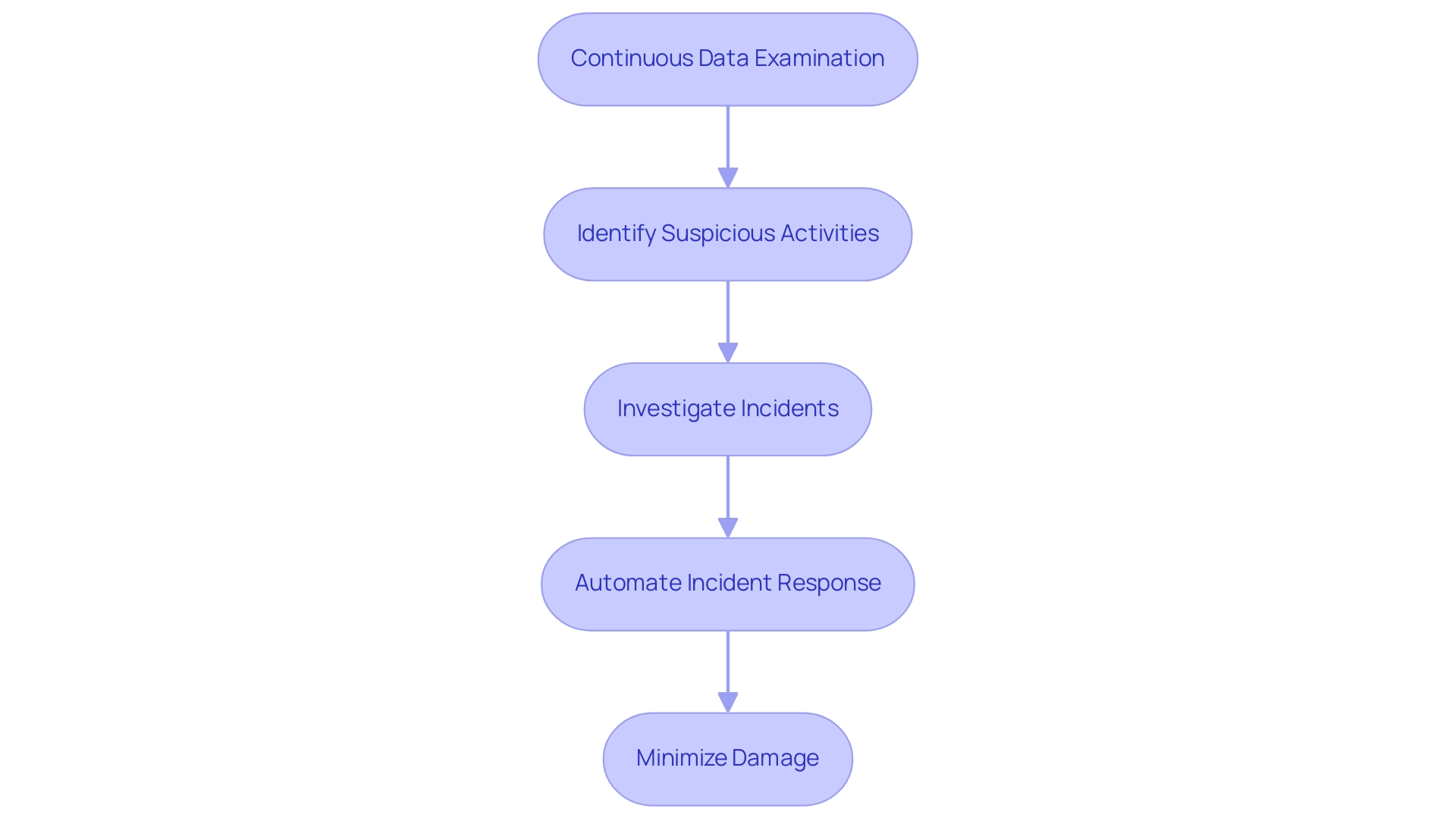
Seamless Integration: Enhancing Security with Azure Services
Microsoft Sentinel's integration with a suite of Azure services—including Azure Security Center, Azure Active Directory, and Azure Logic Apps—plays a pivotal role in the modern protection landscape. This integration enables entities to gather and examine safety data thoroughly, leading to a considerably improved protective stance. According to recent findings, 68% of organizations recognize cloud account takeovers as a significant threat, highlighting the need for robust solutions.
By utilizing current investments in technology, businesses can enhance their protection frameworks, minimizing the intricacy tied to handling varied systems. This interconnected approach not only optimizes operations but also strengthens defenses against the ever-evolving landscape of cyber threats. Omar Khan, Vice President of Azure Infrastructure Marketing, emphasizes this commitment, stating,
The company recognized once again as a Leader for its Ability to execute and Completeness of vision in 2024 Gartner® Magic Quadrant™ for Distributed Hybrid Infrastructure.
Moreover, as outlined in the case study titled 'Future Enhancements in Microsoft Security,' the organization is dedicated to continuous investments in protection, concentrating on improving features across SIEM and XDR, exposure management, and cloud protection. Upcoming enhancements include:
- A SIEM migration tool designed to facilitate the conversion of Splunk detections to managed Microsoft Sentinel analytics rules.
- Cloud-native application protection platforms (CNAPPs) are essential for safeguarding contemporary applications, further improving the overall defense stance of enterprises.
Through such advancements, organizations can better prepare for and respond to security challenges, leveraging Azure services to elevate security data analysis and operational efficacy.
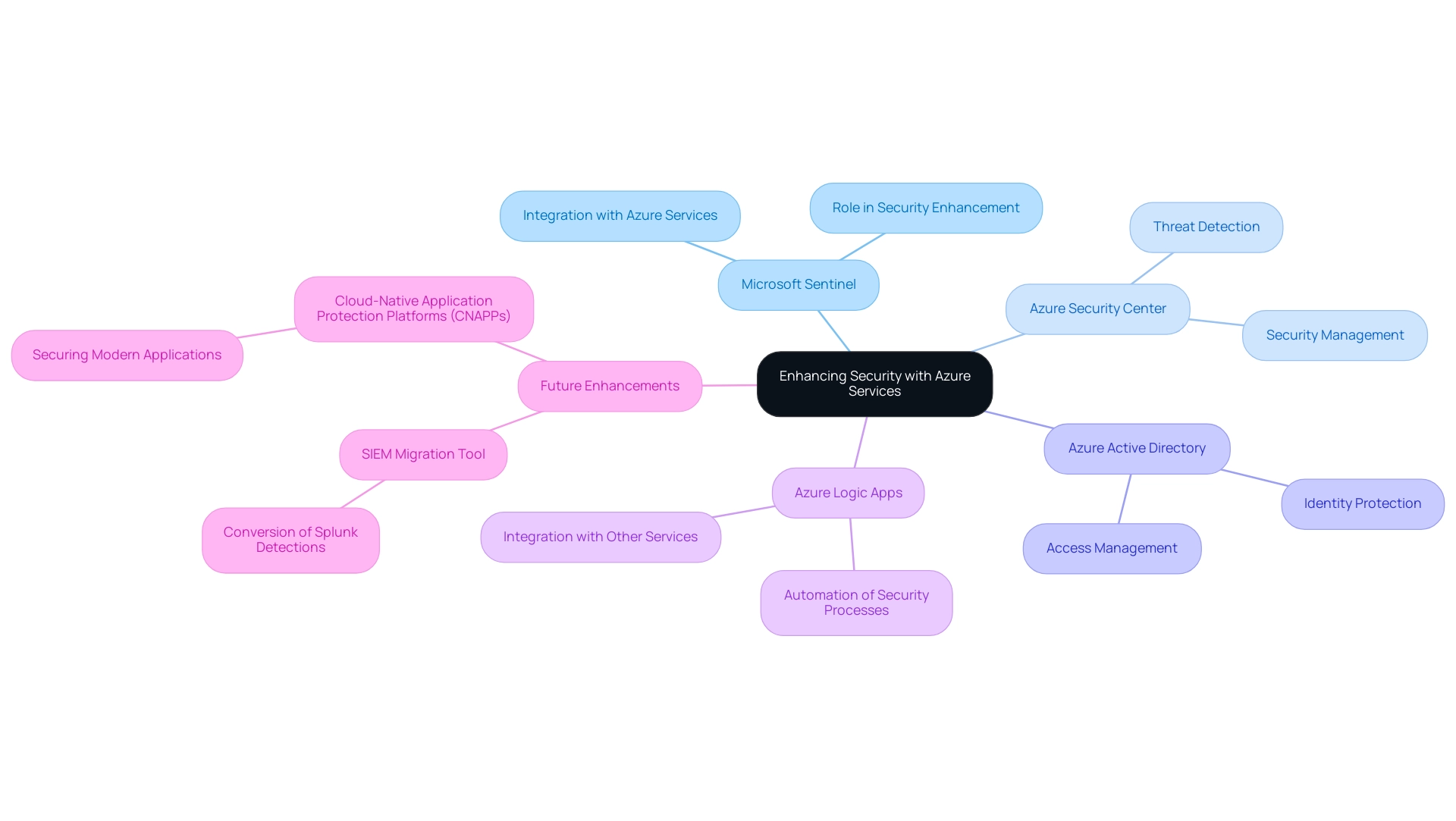
Conclusion
The implementation of Microsoft Sentinel represents a strategic advancement in the realm of cybersecurity, particularly as organizations navigate the complexities of a cloud-dominated landscape. By harnessing the power of real-time threat detection and automated incident response, Microsoft Sentinel equips security teams with the tools necessary to identify and mitigate potential threats swiftly. This proactive approach is essential in an era where cyberattacks are increasingly common and sophisticated, underscoring the critical need for organizations to enhance their security measures.
Additionally, the seamless integration with Azure services amplifies the effectiveness of Microsoft Sentinel, allowing for a comprehensive analysis of security data. This interconnected framework not only streamlines security operations but also fortifies defenses against evolving cyber threats. The operational efficiencies gained through automation and centralized monitoring further enable organizations to maintain continuity and reduce downtime, which is vital in safeguarding both digital assets and business operations.
Ultimately, as cyber threats continue to escalate in frequency and intensity, prioritizing robust security solutions like Microsoft Sentinel is imperative. Organizations that recognize the multifaceted benefits of this cloud-native SIEM solution will be better positioned to protect their digital environments, ensuring resilience in the face of ongoing challenges. Embracing such advanced security measures is not merely a response to current threats but a proactive investment in the future security and success of the organization.




